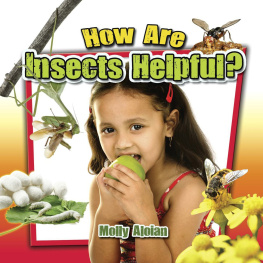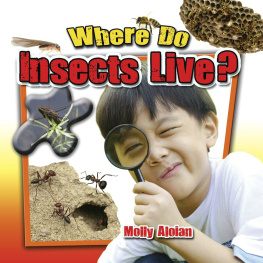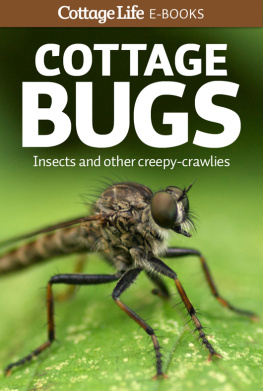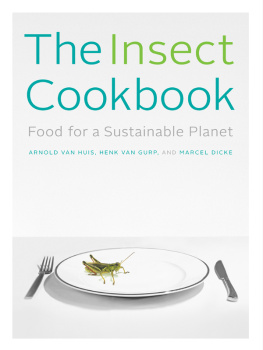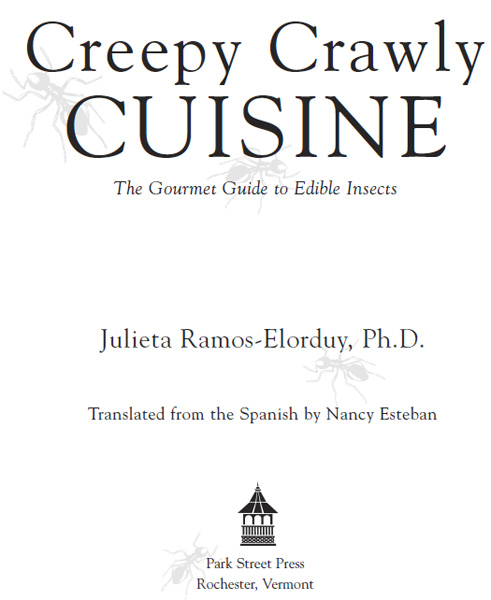
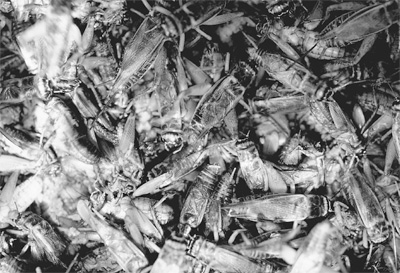
Foreword
Professor Julieta Ramos-Elorduy has probably contributed more to our knowledge of edible insects than has any other person, past or present. For more than twenty years, she and able colleagues at the National Autonomous University in Mexico have studied the use of insects as food in the Mexican countryside. Such use of insects dates to the precolumbian times, and the Mexican researchers have documented use of more than two hundred species. That total is far greater than documented in any other country, though the use of insect foods is not unique to Mexico. In most countries in Africa, southern and eastern Asia, and northern sections of South America, dozens of insect species are among the traditional foods.
Historically (and prehistorically for that matter) insects have played an important role in global nutrition. Early travelers to Africa noted that populations that had access to termites and locusts were in noticeably better condition than those that had no access. In fact, the appearance of a locust swarm was viewed with joy by those who did not have crops at risk. In some ways, things havent changed much. Newspapers in Zimbabwe reported that when grasshoppers unexpectedly invaded the suburbs of the capital city of Harare, Housewives abandoned their domestic chores to fetch buckets, bottles and tins to fill them with the delicious insects.
Insects have not been used merely to ward off starvation. They have held an esteemed place in the cuisines of many countries. A modern cookbook on Cameroon cuisine describes the recipe for coconut larvae as a favorite dish offered only to good friends. Coconuts at the half-hard stage are emptied of their milk, refilled with the larvae and condiments, then cooked (capped end up) in water.
Dr. Ramos-Elorduy and her colleagues have conducted extensive studies in the nutrient content of edible insects. Live insects contain about the same amount of protein as other animals, but in the dried form frequently found in village markets they are very high in proteinand the protein is of high quality, especially when used in combination with other foods. Insects vary in their fat content, some being high in fat (fortunate for those who need more calories), others being low in fat (fortunate for those who are watching their calories). And to the benefit of everyone, insect fatty acids are highly unsaturated, being comparable to those of fish and poultry. Insects are a good source of many of the important vitamins and minerals, including thiamin (vitamin B1), riboflavin (B2), iron, and zinc. Dr. Ramos-Elorduy has researched the nutrients furnished by insects within the context of Mexicos staple foods and nutritional needs. She has proclaimed the high biological efficiency of some insects in protein production (their high food conversion efficiency and high reproductive capacity) and the fact that some insects utilize food substrates that are otherwise poorly utilized in food production. These attributes of insects when used as food have important global environmental ramifications.
The age of edible insects may just be dawning. While they have long been traditional foods in many cultures, a new wave of interest is sweeping through the Western world, evidenced by the favorable attention being given to edible insects by the Western media. Also, as the former editor of The Food Insects Newsletter, I regularly received letters from U.S. readers asking to know where they could find recipes, where they could find edible wild insects, or where they could purchase insect delicacies imported from other countries.
Edible insects are also making inroads into the Western academic community, being included in introductory biology courses, ranging from those in elementary schools to others at the university level. A new entomology textbook published in London by Australian authors devotes an entire section to edible insects. In 1992 the New York Entomological Society celebrated its 100th anniversary by holding a bug banquet at the staid Explorers Club in New York City. The speaker of the evening used the title, Insects are Food: Where Has the Western World Been? So, the so-called West may be now awakening to what it has been missing and soon be joining Mexico and the rest of the world in using and enjoying this vast and varied food resource.
Gene R. DeFoliart
Professor Emeritus
University of WisconsinMadison
December 1997
CHAPTER 1
Introduction

Preparing treehoppers for the pot
INSECTS ANYONE?
For many people the idea of actually eating insects may seem incredible, perhaps even shocking. And while for these people insects may seem a strange choice of nourishment, for millions of human beings throughout the world insects constitute a daily food vital to their existence. It is surprising that an animal group as abundant and nutritious as insects remains such an underutilized resource, not only by those living in urban areas, but by some of those in rural communities as well. The negative (and mostly false) perception of insects as being disease-ridden and dirty has prevented a good number of cultures from taking advantage of a delicious, protein-packed food source. Few people know that insects are actually closely related to lobsters and shrimpthey belong to the same phylumand that in reality they are as tasty and appealing as their well known, but more expensive, crustacean cousins.
To date 1,417 species of edible insects have been recorded in the world and the number of ethnic groups partaking in the consumption of insects (known as entomophagy) stands close to 3,000. Those included in this group range from inhabitants of the deserts of Africa to the countryside of Asia to the urban centers of the United States. The edible species are comprised of fifteen orders of insectsAnoplura (lice), Orthoptera (grasshoppers, crickets, and cockroaches), Hemiptera (true bugs), Homoptera (cicadas and treehoppers), Hymenoptera (bees, ants, and wasps), Diptera (flies and mosquitoes), Coleoptera (beetles), Lepidoptera (butterflies and moths), Megaloptera (alderflies and dobsonflies), Odonata (dragonflies and damselflies), Ephemeroptera (mayflies), Trichoptera (caddisflies), Plecoptera (Stoneflies), Neuroptera (lacewings and antlions) and Isoptera (termites)and are distributed in 112 families, 628 genera, 45 subgenera and 67 subspecies. The majority of edible insects are most frequently eaten in their larval and pupal stages.
JUST WHAT ARE INSECTS?
It might surprise most people to know that insects are the predominant animal group on earth, constituting four-fifths of the animal kingdom. They have inhabited the earth for more than 300 million yearscompared to mans brief existence of only one million yearsand have evolved and adapted to an amazing variety of habitats, demonstrating highly developed social organizations. Because of their miraculous ability to adapt, insects have conquered practically all existing habitats worldwide, even such unlikely environments as pools of petroleum and salt mines. They can be found in trees and shrubs, on the ground, in roots, in the sand, and in an array of aquatic environments. What other animal group shows such remarkable versatility?
Generally speaking, we think of insects as small pesky animals that move, jump, leap, eat, fly, and bitebut from a more scientific standpoint, just what
Next page



